The post Dr. Barry Bogin: “Orphanages everywhere in the world should be disbanded” appeared first on Hope and Homes for Children.
]]>Dr. Barry Bogin is a physical anthropologist based at Loughborough University in the UK.
Known for his pioneering work on the growth of Guatemalan Maya children, Dr. Barry Bogin’s research has led to him to a clear and resounding conclusion. Children need the love and care of family to thrive. Never orphanages.
In this feature, Dr. Bogin describes how his ground-breaking work has led him to understand the importance of love, the harm of stress, and why every child around the world should be brought back to family.
Read the full two-part interview here.
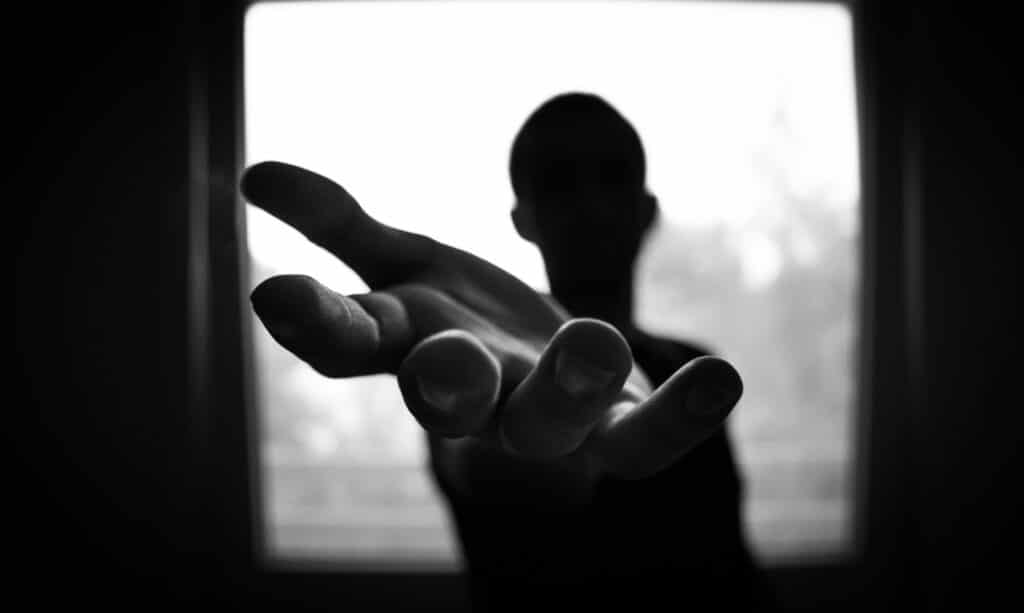
Hope and Homes for Children
A home truth
A professor, a writer and a father of three, Dr. Bogin has long known the importance of family. He’s also seen the harm of orphanages first-hand.
“My youngest was in an institution in China,” says Dr. Bogin. “I’m fully aware of how brutal it all is.”
After bringing his daughter back to family, Dr. Bogin saw how her time in the orphanage impacted her. “It wasn’t just physical growth, it was development. She wasn’t walking when we got her. She was about three, four months behind.” Quickly, he understood why. Stress.
Stress and child development
Years of research into child development has shown Dr. Bogin the harmful impacts of stress. First observed in his studies in Guatemalan Maya communities, Dr. Bogin has rigorously documented how stress drastically impacts children’s development.
“Children who suffer chronic toxic stress have both physical and emotional and cognitive impairments,” explains Dr. Bogin. “Stress hormones are antagonistic to growth hormones, the relationship’s very clear.”
Orphanages reflect the same conditions. Exposed to violence, abuse and neglect, children grow up experiencing profound stress and lack of safety. As a result, for every three months spent in an orphanage, children lost one month’s growth.
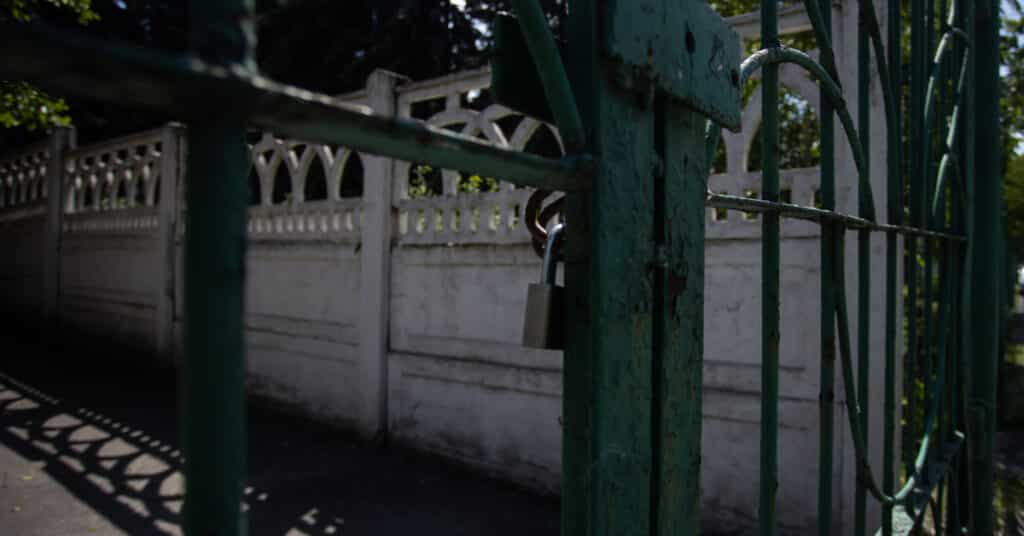
Yevhenii Zavhorodnii / Hope and Homes for Children
“Children in orphanages are stunted,” explains Dr. Bogin. “As soon as they get out of the orphanage, one of the first things that social workers know is that you’ve got to find new clothes, because they grow.”
“Probably the best examples of this are a British study of British adoptees from the Romanian orphanages during the Ceausescu regime, when so many kids were tied in their cots, totally neglected,” he says. “The earlier those kids were adopted into families, the better they do, but all of them show residual effects as adults. These orphans were not just a bit neglected. They were severely deprived.”
Where love is present
For Dr. Bogin, the harm of orphanages stems back to a key flaw in their design. They house and feed children, but that’s it. Orphanages can’t offer family love. But that’s the thing children need more than anything.
“There’s a very famous study done by a British nutritionist, Professor Elsie Widdowson, who went to orphanages in Germany after World War II,” explains Dr. Barry Bogin. “They had lots of kids in orphanages and they experimented: they gave some kids an extra biscuit, an extra orange, and they gave other kids just the normal fare.”
The researchers expected to see how extra nutrition boosted growth. Instead, the opposite was true. The children receiving extra food grew less. The scientists couldn’t understand why. Until they changed focus to the care the children received. They quickly saw the truth.

Hope and Homes for Children
“The matron (working at the orphanage) beat the children. She punished the children at dinner time before they could eat. Well, you know what that does to every kid sitting in the dining room. There’s no digestion. There’s no absorption. And that’s why the interventions didn’t work.”
Professor Widdowson’s test proved that subsistence isn’t enough for children to grow. They need family love to thrive.
“She quotes a passage from the Old Testament: ’Better is a dinner of vegetables and herbs where love is present than a fattened ox served with hatred.’“
Dr. Barry Bogin
Bringing children Back to Family
When we bring children from orphangaes back to family, the positive changes are evident.
“In kids under five, and maybe even up to nine or so, the effect is almost immediate; a month, perhaps six weeks,” says Dr Bogin. “The power of love works very quickly.”
Finally receiving individualised love and care, children get the chance to flourish. Their stress and anxiety are reduced, allowing their bodies to focus on what they’re supposed to. Growing.
“In rich countries, the old-style orphanages don’t exist. Kids are placed with families. It is super well known that placing them in the old-style orphanages is bad. So orphanages everywhere in the world should be disbanded.”
And that’s exactly what Dr. Barry Bogin is calling for. For every orphanage to be closed, and for every child living inside to be brought safely back to family.

Hope and Homes for Children
Find out more about our work
If you want to learn more about our life-saving work bringing children back to family, head to our How We Work page.
If you’d like to stay up-to-date with even more exciting feature articles, updates and opportunities for engagement, sign up to our Mailing List.
Join the mailing list
The post Dr. Barry Bogin: “Orphanages everywhere in the world should be disbanded” appeared first on Hope and Homes for Children.
]]>The post From Moldova: Meet the grandmas bringing children back to family appeared first on Hope and Homes for Children.
]]>“Super Gran may be a work of fiction, but I’ve met the real deal.”
Pete Garratt, Director of Global Programmes, recently visited families supported by our local partner, CCF Moldova. Read on for the inspiring stories of four grandmas fostering children in Moldova.
You may or not be familiar with the tales of Super Gran, the Scottish grandmother with quirky superpowers. But I can tell you, after two days of visiting the families of fostering children in Moldova, I have found not just one, but four Moldovan Super Grans.
Time after time, it’s these Super Grans that spring into action to save the day and lives of young children. Children who, through no fault of their own, have been separated from their parents. From their families. From love.
These are their stories.
Will you help us support families fostering children in Moldova? Donate today and bring strength back to family.

ITV/Shuttershock
Adela’s* story
Adela has eyes that sparkle with love and tenderness, tempered with a steely determination to prove the experts wrong.
Two years ago, experts at a local medical centre said that it wasn’t possible to find foster parents for Radu*, a young boy with disabilities. At three years old, Radu, who has Down’s Syndrome, weighed just 6kg. He had several health problems, including allergies, digestive issues, neurological challenges, and an unsupportive spine. He couldn’t support his own head. The doctors said that if he left the institution, he’d die.
But Adela and her husband, Dumitru*, believed otherwise. She knew that with love, care and the proper support, Radu could have a better life.
“We are stubborn, and we decided to fight for this child.”
And she was right. Radu improved drastically after moving in with Adela. Two years on, he supports himself, walks, dances to music, and is able to chew and digest food of all types. He’s even overcome fruit allergies, and is now a healthy weight.
Inside orphanages, children like Radu just can’t get the support they need to thrive, even if they’re surrounded by medical staff. That’s why we do whatever it takes to get them back to family.
When I asked Adela what had made the difference, she said: “It was our love and care, he’s our family now, and he’ll live with us for the rest of our lives.” A true Super Gran.
“He’s our family now, and he’ll live with us for the rest of our lives.”

CCF Moldova/Hope and Homes for Children
Maria’s* story
Maria has eight grandchildren of her own, and an incredible capacity to love, protect and nurture.
Alongside her partner, Petru*, Maria became a parent once again after deciding to foster four children: Oleg*, Miron*, Elena* and Ana*. All siblings, all aged between two and eight, each of these kids had been left in one of Moldova’s large state-run orphanages for babies and young children. Thanks to Maria, these kids found their way out of the institution and back to family.

Hope and Homes for Children
Today, the small menagerie of animals Maria and Petru look after adds to the noise of the children’s happy new lives together. Now, they’re spending their days playing in a safe environment with a beautiful garden – beginning their journey of healing, together as a family.
Valentina’s* story
Valentina and George*, her husband, have three grandchildren, Andreii*, 14, Dana*, 10, and Bogdan*, two.
When they were young, Andreii, Dana and Bogdan’s mum struggled with addiction and was unable to care for them. Andreii and Dana moved in with their grandma, and Bogdan was born years later.
Sadly, Bogdan was neglected. He weighed just 5kg at six months old. As a result, he was placed inside an orphanage.
But Valentina was determined to rescue Bogdan so he could grow up alongside his siblings. Not inside an orphanage. She fought for guardianship rights, and after a lengthy process won.

Hope and Homes for Children
Now, eighteen months later, Bogdan’s toy cars cover the floor of their flat. It was a delight to see him at a healthy weight, eating normally and developing as he should. Finally, back to family.
Olga’s* story
Olga is a mother and wife who stepped in to care for her niece, Tatiana*.
When Tatiana was six months old, Olga’s sister-in-law left her baby and moved away. Olga will never forget the night when she found baby Tatiana, all alone, without being fed or even having her nappy changed.
“If I hadn’t been there that evening, I don’t think she would have survived until the morning.”
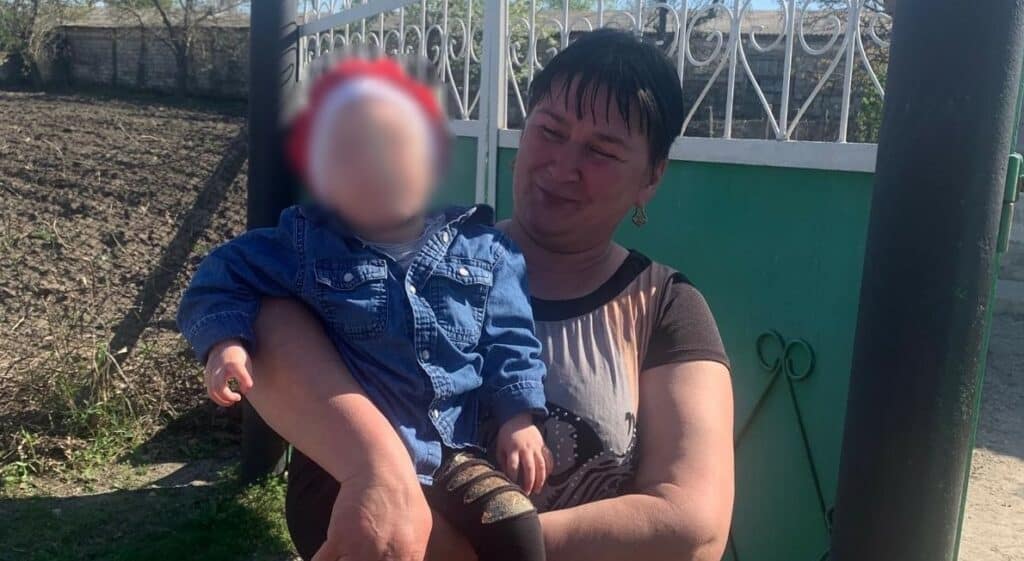
Hope and Homes for Children
Olga and Sergiu*, her husband, took Tatiana in immediately.
Eighteen months later, Tatiana now two, is doing much better. Olga is now her legal guardian, ready to raise her in a loving, family home.
“I have a grown-up son and am having to relearn how to be a mother again,” says Olga, “but Tatiana will stay with us now. We will give her every opportunity in life.”
Thank you for helping families fostering children in Moldova
“Super Gran may be a work of fiction but I have met the real deal.”
I am in awe of the super grans and grandads we met in Moldova. Whether it’s rescuing their grandchildren from tragic circumstances or rescuing someone else’s children through foster care, their superpowers were truly evident.
Alongside our local partners, CCF Moldova, it’s an absolute privilege for us to support these families. From providing legal aid to emotional support, emergency supplies to food and schooling, your donations are helping strength back to family. All across Moldova.
Thank you for your continued support. You’re helping support super grans like Adela, Maria, Valentina and Olga – inspiring carers fostering children in Moldova.
By Pete Garratt
Director of Global Programmes, Hope and Homes for Children
Will you help bring millions of separated children back to family? Donate today.
* Names changed to protect identity.
The post From Moldova: Meet the grandmas bringing children back to family appeared first on Hope and Homes for Children.
]]>The post Helping children living with the consequences of deafness appeared first on Hope and Homes for Children.
]]>Children living with deafness and hearing impairment are 4 times more likely to suffer abuse than hearing children. One of the main reasons children living with deafness are so at risk, is that their specific communication needs are not addressed, especially sign language. This ultimately denies them access to education. It prevents them from being able to disclose harm and abuse. And it also means the ways in which they can maximise their own safety are not adequately communicated to them. This makes deafness a language problem, a communication challenge, rather than a disability. And society is not nearly enough concerned about it.
Redefining what it means to ‘listen’
Here in India, where I’m visiting some of our programmes, Ishaan*, 12, has very strong opinions on this.
“Everyone should learn how to sign …. it’s not my problem if they can’t, it’s their responsibility.”
I’ve just spent the day with Ishaan and some of his remarkable friends. They are all pushing back and demanding that society changes and adapts to include them, rather than them having to fight for their rights to protection, and their rights be able to participate in decisions which affect them. Because they are the experts on their own childhoods.
Over 1 million children at risk in West Bengal
Children living with the consequences of deafness are often not diagnosed until much later in their life, and so remain excluded and suffer the cruelty of stigma. The likelihood of being trafficked into the sex industry if you’re a girl, or into labour if you’re a boy, are much higher if you are deaf. Too often, the solution becomes part of the problem. If your parents have limited education and limited means, then the chances are high that you might be separated from them and taken into an orphanage.
And there, the process of institutionalisation will likely lead to further abuse, certainly neglect, and inflict lifelong consequences.
In fact, the traffickers are actively infiltrating orphanages, coercing children into them, then asking those children to send photos of friends. The traffickers use those photos to select and target other children, getting the children they’ve placed in the orphanages to persuade the targets to run away, into grievous exploitation.

There are only 200 certified India Sign language (ISL) interpreters registered here in West Bengal – a State that has a population of over 100 million people. Of that 100 million, approximately 2 million are deaf or hearing impaired, and more than half of them are children like Ishaan.
Working towards a better future
But it doesn’t have to be this way. Hope and Homes for Children has been working with our wonderful partner organisation, Children In Need Institute (CINI), since 2016. CINI has its own interpreters, offering frontline health and education services.
The World Health Organisation estimates that 60% of deafness is preventable. So if CINI can, through their health programmes,
- get on top of diseases like meningitis, which are key causes of deafness among children,
- and nail early diagnosis so that early interventions can mitigate the risks associated with deafness in early childhood,
then we could massively reduce the scale of the need.
And imagine if, through their education programmes, we could build the infrastructure and capability to make ISL as much a local language – used in homes and schools – just as Hindi or Bengali are. Hundreds of thousands of children would never know the trauma of being separated from their families and institutionalised or trafficked.
Realising every child’s potential
Because here’s the sweet spot: children living with the consequences of deafness can achieve the same educational outcomes as hearing children, if they have the right support. That means they can go on to college or university. It means they are more likely to find employment, and it certainly boosts their earning potential. It shifts the dial from dependency, isolation and exclusion, toward inclusion, socialisation and self-determination. These children will be happier and more productive, and the system would be less costly in the long run. Again, the World Health Organisation is clear:
- An annual additional investment of less than US$ 1.40 per person is needed to scale up ear and hearing care services globally.
- Over a 10-year period, this promises a return of nearly US$ 16 for every US dollar invested.1
Children living with deafness should be enabled to communicate in their language of choice. Everyone benefits. This really is our responsibility. Not theirs. So if you can, please do donate to support the work of CINI and Hope and Homes for Children. You would be helping to transform the lives and futures of many, many children.
[1] https://www.who.int/news-room/fact-sheets/detail/deafness-and-hearing-loss
*Names changed to protect identity
The post Helping children living with the consequences of deafness appeared first on Hope and Homes for Children.
]]>The post Children’s development without the stress of orphanages appeared first on Hope and Homes for Children.
]]>In part 1, professor Bogin talked to us about his work in Guatemala, measuring the effects of toxic stress on young Maya children’s development. In the second part of his interview, he discusses the importance of one to one care for children’s development, and his own hopes for an end to orphanage use worldwide
(AW) We often point out that over 100 years of evidence shows orphanages harm children. What did you find when you looked at records spanning over 300 years on children in orphanages, children’s homes and institutions?
(BB) That was actually a study published in the Journal of Physiological Anthropology. I cite the German paediatrician Piper, who did the survey in the 1950s. He showed that, starting in the 1700s, more than 90 to 100% of all the kids in the institutions died.
So in 1955, they knew this.
Even further back, I cite research on every baby under two years of age that went into the New York City Foundling Home. Some were abandoned, some were given up. That was in the 1920s, when these paediatricians (Dr. Chapin, Bakwin, and then in 1945 Dr. Spitz) wrote the most powerful indictment of these kinds of places. Spitz coined the name ‘hospitalism’ for the syndrome that these kids under two years of age suffered.
They were given food, their nappies were changed, but this picture shows the nurses. It looks like it’s COVID times. I mean, the nurses are in full gowns. The only skin showing is a little bit of their forehead and their arms. Their mouths are covered with masks. It wasn’t because the nurses did not care, they were not bad people, but rather they believed that covering up was good for sanitation.
But, they could not engage with the infants. So almost all of them died. That’s because they had really no love. Other photographs from around the same time, staged photographs showing the kids are all in wonderful starched clothing and they have little toys, but there’s only one, severe matron in the picture. That one woman could not provide the love and care that the many orphans needed.

Evidence from Europe
And then there is a very famous study done by a British nutritionist, Professor Elsie Widdowson, who went to orphanages in Germany after World War II, in the British controlled territory. The [science of] nutrition was in its infancy after the war, but there was a lot of interest in it because of all the hunger during and after the war, all the food rationing etc. They had lots of kids in orphanages and they experimented: they gave some kids an extra biscuit, an extra orange, and they gave other kids just the normal fare.
And it turned out after six months, the kids with the extra biscuits and the orange didn’t grow, but the kids who were getting regular orphanage food were actually growing better. Prof Widdowson said “this can’t be right!”. So she switched orphanages. She thought, well, maybe we did something wrong. So she gave the other kids who were growing well, the extra orange and extra biscuits, fortified with various nutrients. And lo and behold, at the end of the six months, again, the ones who were getting the intervention didn’t grow.
Better a meal served with love
But she found out what happened.
The matron, who had been at the orphanage, delivering the intervention in the beginning, had changed orphanages. This matron beat the children. She punished the children at dinner time before they could eat. Well, you know what that does to every kid sitting in the dinner room. There’s no digestion. There’s no absorption. And that’s why the interventions didn’t work.
And she quotes a passage from the Old Testament that “Better is a dinner of vegetables and herbs where love is present than a fattened ox served with hatred.”
So all this stuff has been known. I’m not coming up with something really new, but you’d be surprised how many places have run the story of the press release from Loughborough University. And I was interviewed by a couple of newspapers and BBC, Leicester radio….it’s like people have forgotten.
I forgot. I knew this stuff and I forgot it.
Resetting the clock on severe deprivation
(AW) So how might an orphanage, or any setting where there’s an absence of one-to-one love and care, affect a child’s emotional development as well as their physical development?
(BB) Well, kids who suffer chronic toxic stress have both physical and emotional and cognitive impairments. This is well known. Probably the best examples of this are a British study of British adoptees from the Romanian orphanages during the Ceausescu regime when so many kids were tied in their cots, totally neglected.
The earlier those kids were adopted into families, the better they do, but all of them show residual effects as adults. They have lower cognitive performance, they have physical growth deficiency, they’re small. They’re not stunted, but when you look at them as a group, they’re shorter. And they have various kinds of cognitive impairments.
Of course, these Romanian orphans were not just a bit neglected. They were severely deprived.
So that’s what happens in severe deprivation and with less than severe deprivation, you get less severe impairments. But you get them.
The end of orphanages
(AW) Do you believe from your findings that orphanages should no longer be used globally?
(BB) Absolutely. This is also very well known. In rich countries, the old style orphanages like the New York city facility don’t exist. So kids are placed with families. It is super well known that placing them in the old-style orphanages is bad. So orphanages everywhere in the world should be disbanded.
I have three children. My youngest was in an institution in China. I’m fully aware of how brutal it all is.
China has given up, of course, on these [intercountry] adoptions. They say it’s because they’ve changed their one child only policy. That’s part of it. The other part of it is they realize how brutal the institutional system is. When we got our daughter, she was 14 months old, and she was on the 30th percentile for length. So, she was shorter than 70 percent of kids her age. Now she’s about at the 50th percentile – average height. So she also had her immediate growth spurt after being adopted.
It wasn’t just physical growth, it was development. She wasn’t walking when we got her. She was about three, four months behind. But the Chinese basically put up for adoption girls they knew were going to be healthy. They often put the less healthy girls in the dying rooms at the orphanages. So once the directors of the orphanages sorted the girls out the ones that they didn’t think were worthy were just put into a room with doors closed. They just died of hunger and dehydration.
Fortunately, that’s [no longer] done in China, but I’m sure that it’s still going on elsewhere.
We’d like to extend our thanks to Professor Bogin for sharing his thoughts with us, and sharing in our commitment to transform child care so that every child can experience the love only families can provide.
The post Children’s development without the stress of orphanages appeared first on Hope and Homes for Children.
]]>The post Why child development hinges on love and hope appeared first on Hope and Homes for Children.
]]>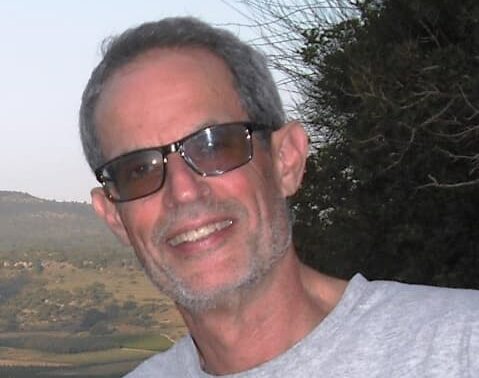
Hope and Homes for Children’s Amelia Whyman caught up with Barry to find out more about his research.
Amelia Whyman (AW): Barry, having studied child development for decades, you’re a convert to children’s emotional wellbeing as a key factor in their overall health and development. Can you tell us how that came about?
Prof Barry Bogin (BB): Well, I never really thought about the emotional side of things until quite recently. I was mostly convinced by the other ‘big shots’ of the day, that children’s development was [about] nutrition or infection.
Those are the first two things the World Health Organisation lists as affecting kids’ growth. The third thing is inadequate care. So essentially, they’re putting the blame on mothers or whoever’s taking care of the kids.
There’s nothing wrong with those things! Of course kids need food. And of course kids need good health. And of course kids need good care from other people.
But, the World Health Organisation says nothing about society. It’s all ‘the family’. 90% of all interventions that I’ve been involved with focus on a mother and her baby. And we don’t think about society at large.
Why are these people poor to begin with? Why are they marginalized to begin with? Why are they suffering? Why are they stressed out 24 hours a day, 7 days a week? We don’t think about that. We just say, ‘if we sprinkle some nutrients on their food, or we give them a flush toilet, let’s see if that makes the kids healthier’.
Well, it doesn’t.
Good nutrition alone is not enough
That realisation came from analysis I did, with others, of nutritional interventions in low-income urban areas around the world; we found these nutritional interventions either have no effect, or their effect is smaller than possible measurement errors, or they actually had negative effect.
In other words, the kids who got the intervention at the end were shorter than the kids who didn’t get that. These are under 5s.
So several popular reviews have found that nutritional interventions or sanitation interventions have no effect on improving growth.
And that got me to say, well, what does?
Upstream factors
At that time, some other people were already talking about ‘upstream factors’ – the social, political and economic system of the society.
And I already knew this. It was not a surprise, but I had never put two and two together. So, around eight years ago, finally, I did put two and two together.
I said, yes, it’s, it’s these upstream factors. It’s the love of the society. If a society doesn’t love its people, those people suffer. If the society is selfish and hoards resources for the few who are in power, and then if there’s violence on top of it, then the marginalized just suffer.
The chronic stress of suffering
As we know now, they suffer because they have chronic physiological stress and that stress produces hormones. We all get short term stress hormones, for example crossing the street in front of a bus, or if you’ve got a big exam next week. It’s good to have a stress response at that time; it will get your heart rate and blood pressure up, it diverts calories from elsewhere in your body to fighting or fleeing. That’s fight or flight syndrome.
But, when you have chronic stress 24/7, when you’ve been exposed to stress before you were even born, because your mother’s been suffering chronic stress for decades, that blocks your own physical growth, brain development, cognitive development, your school performance – everything. Those stress hormones are antagonistic to growth hormones. The relationship is very clear.
Stunted growth
And not only do stress hormones block growth of the skeleton, they promote the storage of any extra calories as fat. And that’s what we see around the world today. In middle- and low-income countries, our kids suffer a very high prevalence of what’s called stunting. That’s a very short height for age.
Kids in orphanages, many of them are stunted because they just stop growing. As soon as they get out of the orphanage, one of the first things that social workers know is you’ve got to find new clothes, because they grow.
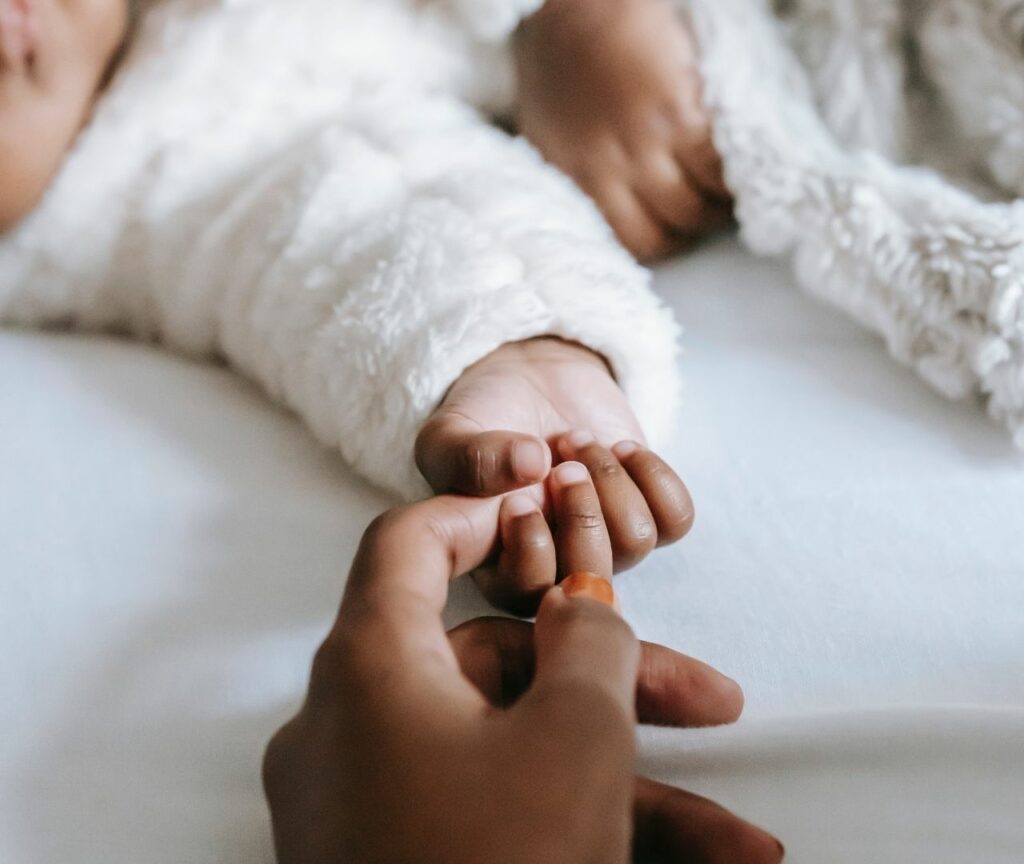
(AW). This is fascinating. From your own years of work, typically how long would you say it can take a child to recover, when love and hope are reintroduced into their life?
In kids under five, and maybe even up to nine or so, the effect is almost immediate; a month, perhaps six weeks.
So the power of love works very quick.
I worked in Guatemala for many years studying the growth of Maya (people native to Central America) school kids. Later on, I measured Maya boys and girls who were in the United States. I measured the kids in primary school, children between the ages of five and 12. And in 1992, I found that they were about 7cm taller than children the same age back in Guatemala, including their own brothers and sisters. In 2000 I remeasured a different group – same places, same schools – and they were 11cm taller. And not only were they 11cm taller, which is just amazing, they were taller than their own brothers and sisters who had been born or spent their early lives in Guatemala. So it wasn’t genetic. It was clearly something about life in the United States.
Now these families were still poor. Many of the parents were still undocumented. But most of the kids by 2000 had been born in the U.S. The law in the U.S. is if you’re born in the U.S., you’re a citizen. That’s it. So these kids were entitled to services that citizens get; breakfast and lunch at schools, and some health care. And of course, that helped nutrition and health status. But that explains maybe two, three, four centimetres.
So let’s say half of it is due to nutrition and healthcare. The other half is due to the lack of this chronic, toxic stress in their lives.
They weren’t afraid, their parents weren’t afraid, the mothers weren’t as afraid when they were pregnant. They could walk down the street, and they were just kids; they weren’t the target of a civil war. They weren’t the target of Guatemalan government genocide campaigns.
Stress takes a toll on everyone in society
But fear is still a problem for everybody in the country. That’s what I pointed out in another article I did before Love and Hope – Fear, Violence, and Stunting in Guatemala.
The children of the richest people in Guatemala have a stunting rate of 17%. It should be less than 2%. In a normal situation, some kids have to be short, some kids have to be tall – that’s just the way height is distributed – with a bell-shaped curve of heights, where most people are in the middle.
In other countries like Pakistan and India the richest families have over 20% stunting in under five-year-olds. That’s a sign that you can’t get away from it. If the society is corrupt and violent and mistreats the lowest 20% of the population, that also affects the wealthiest.
Because the wealthiest have to live in that country too.
Little kids in orphanages live with that kind of fear too. Maybe they’re not going to be kidnapped (like in Guatemala), but they can be physically abused, sexually abused.
————————
In the second part of our interview, Professor Bogin discusses how with the loss of our own orphanages, many higher income countries have forgotten the importance of one to one care for children’s development, and his own hopes for an end to orphanage use worldwide.
The post Why child development hinges on love and hope appeared first on Hope and Homes for Children.
]]>The post The harm of orphanages (Part 1): The illusion of protection appeared first on Hope and Homes for Children.
]]>In Kenya, over 40,000 children are living in orphanages. The sad thing about this statistic is that it is approximate, because the true number is unknown. There are untold numbers of children who the government can’t account for. They are invisible. Even those children who are visible in the statistics, remain invisible in reality; all society sees of them are the walls of the orphanages or children’s homes that confine them.
To an unsuspecting person, these walls can represent protection and care but recent revelations, not one, not two, but many revelations, show that these walls are a façade, hiding despicable acts of violence against children.
Recently, even in addition to the many other harmful effects of institutional care, acts of sexual violence against children in orphanages have been making headlines in Kenya.
Most recently, in February, 2019, a man who had been convicted of sexually abusing children in the Netherlands was charged with committing similar offences against girls in an orphanage he had set-up in Kenya, after his release from prison in Europe.
Sadly, this case is nothing new. In 2012, the British Airway’s pilot, Simon Wood was accused of using his position to abuse vulnerable children in Kenyan and Ugandan schools and orphanages. The allegations came to light when Wood was charged with sexually abusing a child in the UK. He committed suicide before his case could be tried.
In 2017, a teenage missionary from the USA who volunteered in an orphanage in Kenya, was sentenced to 40 years in prison for sexually assaulting three girls and a boy while working at the institution.
It is not only tourists and visitors who have been found guilty or charged with sexually abusing children in orphanages in Africa. In March 2019, a cook at a children’s institution in Kenya, appeared in court, accused of sexually assaulting children living there.

Voluntourism in orphanages
These cases show how orphanages offer sexual predators an easy avenue to perpetrate violence against children in the name of charity and how volunteers and visitors may subject children who are already vulnerable to further risks.
Poor child protection oversight is also to blame. Perpetrators, some with criminal histories, disguised as volunteers and well-wishers, easily find their way into these orphanages; often you only need to carry a bag of goodies to be let in to interact with the children.
Some unscrupulous orphanages have gone further to subject children to violence by cashing in on the lucrative business of voluntourism in orphanages, at the expense of children. Some have built paid accommodation centres for volunteers within the orphanage walls and even allowed volunteers to sleep in the same accommodation as the children.
It is not that we did not see this coming. The World Report on Violence Against Children published by the UN in 2006 raised the alarm on the state of children’s homes and orphanages. The report includes research that shows that violence in residential institutions is six times higher than violence in foster care, and that children in group care are almost four times more likely to experience sexual abuse than children in family based care.
This research was not published to gather dust on the shelves. It was published to be read and primarily to guide policy and practice in the child protection sector by governments and civil society organizations. Unfortunately, Kenya is an example of a country that has not acted on the report, and by so doing, is not listening to, but failing thousands of children who are in these institutions.
Holding children in often isolated places, away from the eyes of the community, only reinforces the vulnerability of children to violence and other forms of abuse.
The trauma that these experiences inflict on children is almost irreparable. With their confidence shattered and shame inflicted by the people who purport to be their primary carers, many of these children and young people are left to endure the violence in silence, too ashamed to seek the protection and psychological support they need.
The clarion call to end the era of orphanages can no longer be ignored
The rampant abuses so far revealed show that every day that passes risks being another grievous day of acts of violence against children. These children are tomorrow’s citizens and beside the subjective trauma they will live with, our society will forever be accountable for perpetuating their suffering, for sitting on the fence when we knew better, when we knew we could do better.

Over eight decades of research now exists to show that orphanages and similar institutions do not protect children; they harm them. And we know that by strengthening families and communities we can eliminate orphanages.
For all those children who have suffered so terribly as a result of this unacceptable system, who are suffering now, we must say loud and clear that the answer to protecting vulnerable children is always family, never orphanages. Now is the time to make this ideal the reality for children everywhere.
Stephen Ucembe is Regional Advocacy Manager for Hope and Homes for Children in East and Southern Africa. An experienced social worker, he supports our partners in the region to prevent children being confined to institutions and advocates for a model of care that allows children to grow up in families. In a series of 3 blog posts he explores the damage of orphanages in the African context.
To know more
To know more about the harm of orphanages read our part 2 blog of this series: “The harm of orphanages (part 2): weakening family and community structures in Africa“.
Follow this link to know more on the topic of Orphanage Voluntourism, and check out our Volunteering Checklist to choose the right volunteering program and to make sure your time overseas is spent making a genuine difference.
If you want to get involved and help Hope and Homes for Children in our mission to be the catalyst for the global elimination of institutional care follow this link.
Help us #EndOrphanageTourism
Take action now
#EndOrphanageTourism – campaign against child trafficking and slavery in orphanages
The post The harm of orphanages (Part 1): The illusion of protection appeared first on Hope and Homes for Children.
]]>The post A Day in my Life appeared first on Hope and Homes for Children.
]]>Our Ukrainian colleague Daria, who accompanied the children every step of the way, talked to us about how we kept them safe on the long journey to shelter in Romania.
It was a mammoth event; nearly 50 hours, with more than 50 children! The children had their names and details attached to them in little wallets. Some were stamping feet to keep warm, everyone was nervous.
A carriage, specially prepared for us alone, opened. When the children were aboard safely, we instructed them to put all telephones on flight mode and to not call or send anybody their location. At night the train lights were out. And we didn’t want any mobile phone lights to be seen from outside, in case we came under fire. We also had to reassure the children not to be scared if they heard any air raid sirens, or if the train stopped suddenly.
Despite cancellations and delays, we made it safely to the border point near the town of Solotvyno in the dead of night. But the bus was unable to go over the bridge between the two states.
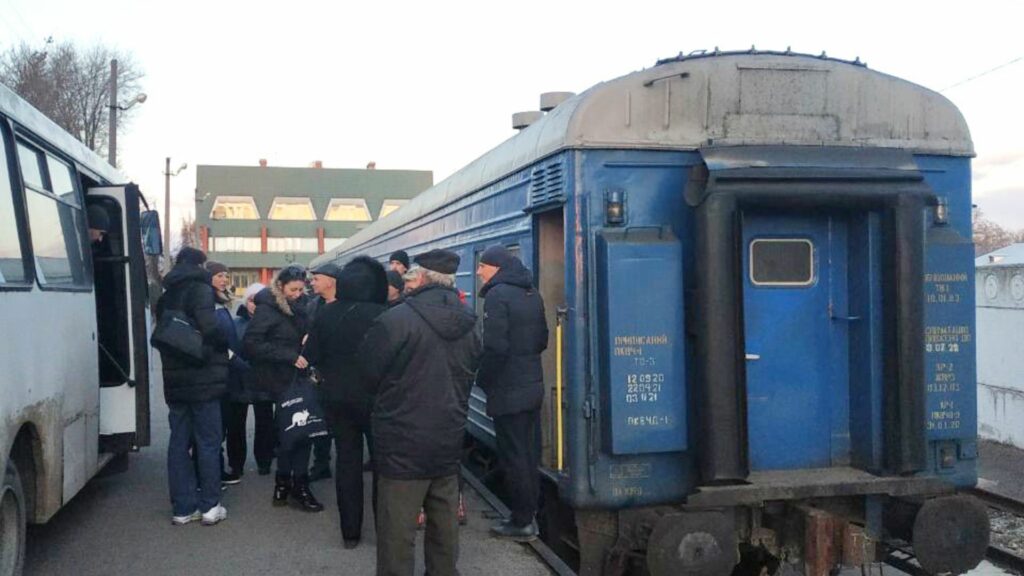
Luckily, kind Samaritans came to our aid to help us bring all the children and their luggage across through passport control. Just over the other side we were met in heated tents with hot drinks and packed lunches, brought by the Romanian team. They’d also brought thermos flasks full of hot water for baby formula, and motion sickness tablets which you just can’t get in Ukraine anymore.
We told them, “No, don’t worry. In this country, there’s no war”
After a pit stop, we drove the final hours to the reception centre prepared for us in Iași. Throughout the journey the children were asking, “Have we arrived yet? Does it have air raid sirens? Please tell us it will not have sirens?” We told them, “No, don’t worry. In this country, there’s no war”. It was very hard for them to understand that they didn’t have war after one month of conflict.
Most of the children understand very well what’s happening now back home in Ukraine, but so as not to stress them, we have said that the children of Romania have invited us to see their culture and to be their guests. They now see it more as a trip.
I really miss my country, Ukraine, but I’m really relieved that I have my own children with me in a safe country, and that I could help save these other children from the bombing. My husband insisted that that we leave Ukraine, while he stayed behind. I miss him. But here everything is good; everybody is happy to see us.
Daria Doshchuk is a regional coordinator at Hope and Homes for Children, Ukraine.
Support Ukraine Make a donation
It has been a hard journey, particularly on the brave carers and educators who have evacuated along with their families so they can continue to support these children. Any gift you make will help us continue to protect vulnerable children.
The post A Day in my Life appeared first on Hope and Homes for Children.
]]>The post Welcoming Kenya’s New Care Reform Strategy appeared first on Hope and Homes for Children.
]]>A return to family and community-based care for Kenyan Children.
The global coronavirus pandemic has had devastating effects for Kenya’s vulnerable families and children. It has resulted in an unprecedented rise in levels of violence against women and children. Much like the virus itself, the pandemic has exacerbated underlying weaknesses in our health, care and support systems.
Conversely however, the pandemic has also exposed the lie that the majority of children in institutions are orphans. Before the start of the pandemic in March 2020, it was estimated that 45,000 children in Kenya were living in orphanages (also known as Charitable Children’s Homes). After the government pronouncement that children should be returned to their families as a measure to control the spread of COVID-19, about half this number were, at a stroke, taken out of orphanages and sent back to their families and communities.
In the years since independence, thousands of children have passed through these orphanages. This system of ‘care’ has unnecessarily separated children from their families, depriving them of family ties and the bonds of community. As a consequence, these children are denied a central part of their development, socialization, identity and belonging. They are denied their right to freely participate in the cultural and traditional life of their communities.
Many children’s homes that purport to provide the basics of food, shelter, health and education, also fall short of doing so adequately. Some studies have shown that children in such environments are six times more susceptible to abuse than their peers living in family environments. Young people who have survived this system are disadvantaged; many have challenges forming healthy relationships, live with mental health issues, suffer stigma and discrimination in communities, and have poor social and life skills amongst other issues. But this hasn’t always been how things are done in Kenya. This practice has been normalised over many years; the past inactions of the government have legitimised family separation and orphanisation.
But it is never too late to start over. A towering figure of freedom and democracy, Nelson Mandela, once said, “One can measure the greatness of a nation and its moral progress by the way it treats its children” and today, we see a new dawn.
We now know as a country that the practices that have failed us, bringing us to this grim state of affairs with the child care and protection system, can’t be the ones to take us forward. This is evidenced by Kenya’s newly launched care reform strategy, which describes a path forward.
It acknowledges our failures, identifies gaps in laws and policies, and guides us on how to escape the rut of orphanages. It lays out a blueprint for how to build a new system that prioritises the prevention of child separation, through support to vulnerable and poor families and communities, who are more at risk of placing their children in institutions.
Together with other actors, Hope and Homes for Children has supported the government of Kenya in envisaging and designing this strategy, aimed at a better future for its children. Prior to the strategy, in 2018, we helped the government see what was possible, by facilitating a benchmarking trip to Rwanda – a country that was rife with orphanages after the genocide, but is now on the verge of eradicating them completely through a care reform process started in 2012, supported by Hope and Homes for Children. We have continued conversations, facilitation and training aimed at improving care and protection; enhancing laws and policies and developing tools and guidelines to make care reform a reality across the region.
We’re delighted about the new dawn and the journey that has brought us to this moment. We hope to continue supporting the government and other stakeholders in their ongoing care reform efforts, whilst acknowledging this is just the beginning. The hardest part is still to come; making a family a reality for all children. We can, and we must, stop the establishment of orphanages, focus our efforts on addressing the root causes of separation, neglect and abandonment and above all, invest in communities and families.
Stephen Ucembe is Regional Advocacy Manager for Hope and Homes for Children in East and Southern Africa. An experienced social worker, he supports our partners in the region to prevent children being confined to institutions and advocates for a model of care that allows children to grow up in families.
The post Welcoming Kenya’s New Care Reform Strategy appeared first on Hope and Homes for Children.
]]>The post Notes from Ukraine: A week in the warzone appeared first on Hope and Homes for Children.
]]>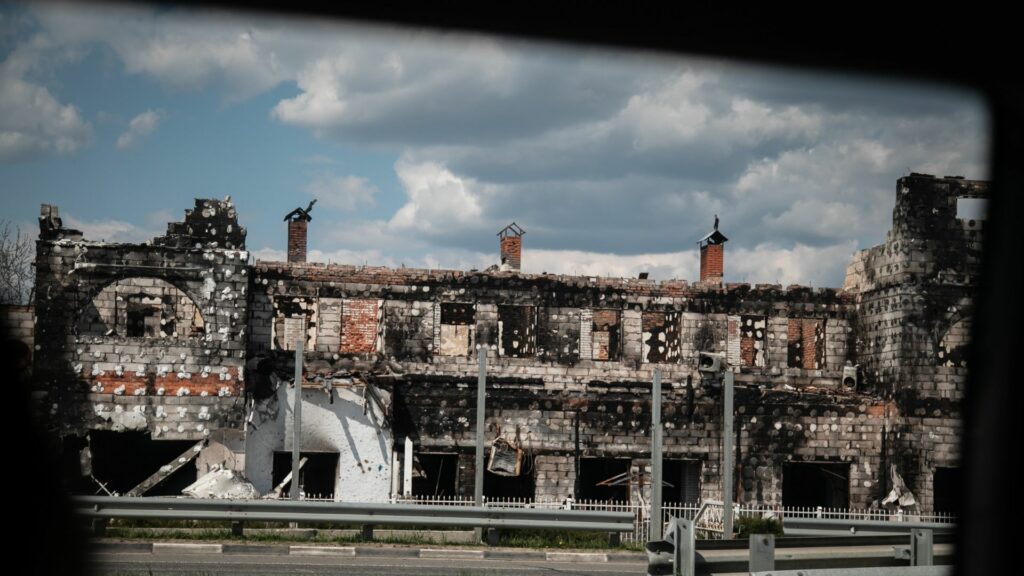
May 2nd, 2022
In Ukraine.
The damage committed by the Russians to infrastructure is widespread. In Borodianka, 98% of government buildings – schools, kindergartens, foster homes, health, administration – have been destroyed. This not only disrupts education and health services for children, it also prevents parents from getting back to work.
Our incredible team here are supporting some of the most vulnerable families with food, medicine and blankets. But the development of services that can endure over the medium to long term is important too. So, we’ve been discussing what the key needs are and how we can assist with local administrations. This will be especially important for children who are too often overlooked in humanitarian responses, like those with disabilities.
May 3rd, 2022
With Halyna, our inspirational country director, here in Ukraine.
Today we’re assessing the damage a Russian rocket wrought on a school. It ripped through a second floor classroom, utterly destroying it. Tank shells have pockmarked the football pitch. The children were still in the school but were marshalled into the basement just in time. It is a miracle that no one was killed.
Schools provide vital safe spaces and ways of including vulnerable children. The invasion turned that upside down. Online schooling is now being rolled out but access to the internet is patchy and not everyone has the kit. We’re planning to help with that.

May 4th 2022
We’ve just visited a maternity unit which had experienced repeated shelling – despite the huge signs making it clear it is a hospital. New mums and babies were inside when the building came under fire. Incredibly, they managed to escape.
63,000 babies have been born since the start of the invasion. We know from Bosnia and other places that parents transmit their trauma to children, even if the child wasn’t alive during the conflict.
Older children have lived through terrifying moments themselves. Their trauma will have lifelong consequences if not attended to, making them vulnerable to being taken into care. Separated from their families.
There is a child mental health catastrophe rocketing toward us. But, we know that the trauma can be mitigated and/or prevented with the right mental health interventions.
That’s why we’re in the process of developing a mobile mental health outreach service in the worst hit towns around Kyiv. These will also provide us with a vital entry point through which to also access communities with families who need emergency provisions, like food.
The only reason we’re able to do this is because of the generous donations of our amazing supporters.

May 5 2022
In the Kyiv region, 35 communities have been levelled and 15,000 buildings destroyed. Landmines have been laid in destroyed buildings by the Russians, which are killing dozens of people who are returning to their homes.
Tracts of land in the areas we’re working in haven’t been cleared of mines yet. We’ll use the mobile units we’re developing to train teachers and raise land mine and unexploded ordnance awareness among children.
May 6 2022
Here in Ukraine, there is always hope. Despite the damage inflicted on this school in a Russian rocket attack, the words of Gandhi on the wall are inspiring: the future depends on what you do today.
Our Country Director, Halyna, and our remarkable team, have been living by these words to deliver life-saving support to the children and families most affected by the war.
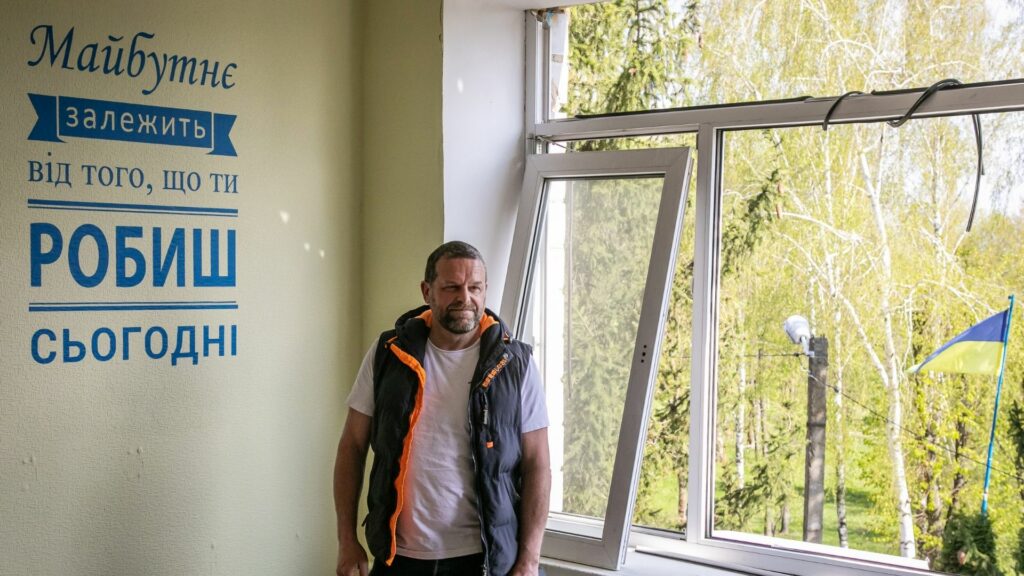
May 7 2022
Most organisations have values. At Hope and Homes for Children we have three: courage, excellence and integrity. We talk about them a lot. They guide our toughest decisions and they help encourage the best in our behaviour and actions.
These two Wonder Merchants count among the best of us. Nadia on the left. Halyna on the right. When we were in Borodianka on Monday. They live and breathe our values and their application of them is the reason how they’ve helped to save the lives of so many children.
When the world is losing itself, there are some who just step up without any fuss and stop it from tilting on its axis. Nadia, Halyna and our team here in Ukraine, are among them.
You spread hope when others might have abandoned it.
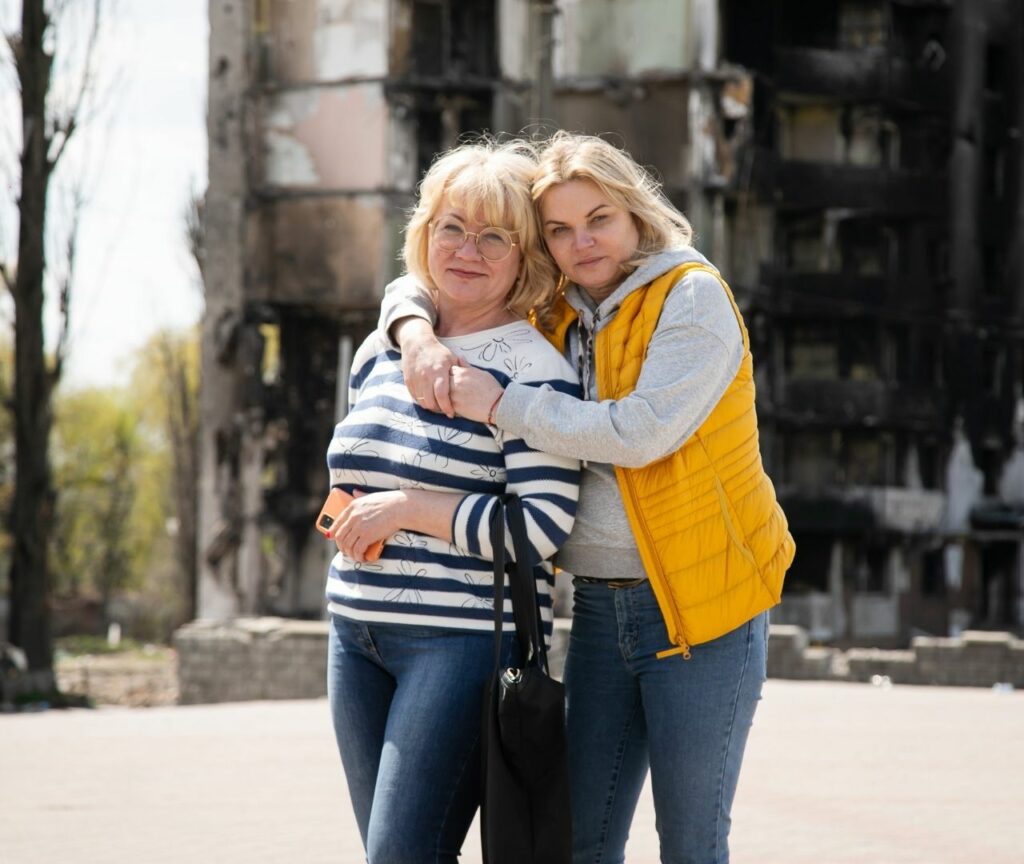
May 8 2022
Amid the destruction wrought by the Russians there are countless stories of resolve, kindness and humanity.
Ivan escaped Mariupol in a transit van with his family. They picked up another 5 families along the way – all mums with their children. Fuel is short here and they were in danger of running out before getting to safety. Ivan spotted a damaged Russian tank just off the road, hopped out of the van with a rubber hose and siphoned the diesel out of it. Our team got them all accommodation and provided them with food when they arrived in Dnipro.
Then, there’s young Dmytro, 14 years old, whose father was killed by Russian shelling and so has been caring for his mum who is living with disabilities. He had the help of his Gran. Then she died. Dmytro had to dig her grave and place her in it. No child should have to endure that. We are providing him and his mum all the support we can.
I had the privilege of meeting Lyudmila, head of the child protection department in Borodianka. The wanton murder, rape and shooting of hundreds of civilians, including children, is beyond grief. She carries this burden heavily, but with dignity and duty. Our team will be working with her to help rebuild the protection services and infrastructure that is vital in supporting families to protect and care for their children, including those with disabilities.
Our hope is that we will achieve all this by building a system that prevents children from being separated from their families and taken into care. Or, when necessary, provides them with alternative forms of family care.
We will be aiming to focus a significant part of that system on the 100,000 children associated with Ukraine’s orphanages: those still confined in them; those sent back home without any preparation or planning; and those vulnerable to being locked up in them the majority of whom have disabilities and are being punished for that.
I cann’t imagine finer humans than Lyudmila or my colleagues across Hope and Homes for Children to create the opportunity to succeed in this endeavour.
And to everyone who is supporting us. Thank you. Thank you so very much.
The post Notes from Ukraine: A week in the warzone appeared first on Hope and Homes for Children.
]]>The post Responding to the refugee crisis in Moldova appeared first on Hope and Homes for Children.
]]>With so many people arriving from Ukraine, the way we work with families has also changed. In early March, we started to shape our response to the refugee crisis.
Currently, we are helping families living in 16 refugee accommodation centres (RACs) in the northern part of Moldova. We will begin working in two more RACs in the near future.
Based on signed MoUs (Memorandum of Understanding) with local public authorities, in all 16 RACs we have provided hygiene and food supplies, focusing on more specific items such as baby food and hypoallergic food items. We have also equipped free play corners to be open around the clock for children and their families. We have set up informative corners and provided arts & crafts supplies for children.
At the end of February, the world as we know it changed.
One mom told us that reading together was a big part of her and her son’s routine when they were home. But when she left, she had not managed to pack any books. We have provided them with books to read, and drawings to look at – bringing back a small piece of normalcy for her and her son.
In another RAC in northern Moldova, a 12-year old has asked for acrylic paints so she can pursue her hobby and put in colours her emotions. She told us that her father works abroad while she, her mum and younger brother are in Moldova. She really wants to go back home to her friends and grandparents. She told her father that she is getting better at her art and she will sell some of her paintings so they get the money to go back home, and life can return to how it was before the war.
She told her father that she is getting better at her art and she will sell some of her paintings so they get the money to go back home
Some families are making longer term plans. They are planning what to do if the war continues and their home towns are not safe to return. One mum with a 15-year old plans to move out of the RAC and go to Chisinau to find work. She plans to enrol her son in a local school, mentioning that “education is the most important asset.” They will need support in finding employment, legal advice on contracting, support with school enrolment and other move-related priorities.
In some RACs, we are planning structured activities with caregivers and children to support their social-emotional development. 8 staff members have received training to do this from War Child Netherlands in TeamsUp.
Additionally to ensure integration, we plan to pilot a voucher based intervention for both refugee and host families, based on several criteria – age, disability, family size etc.
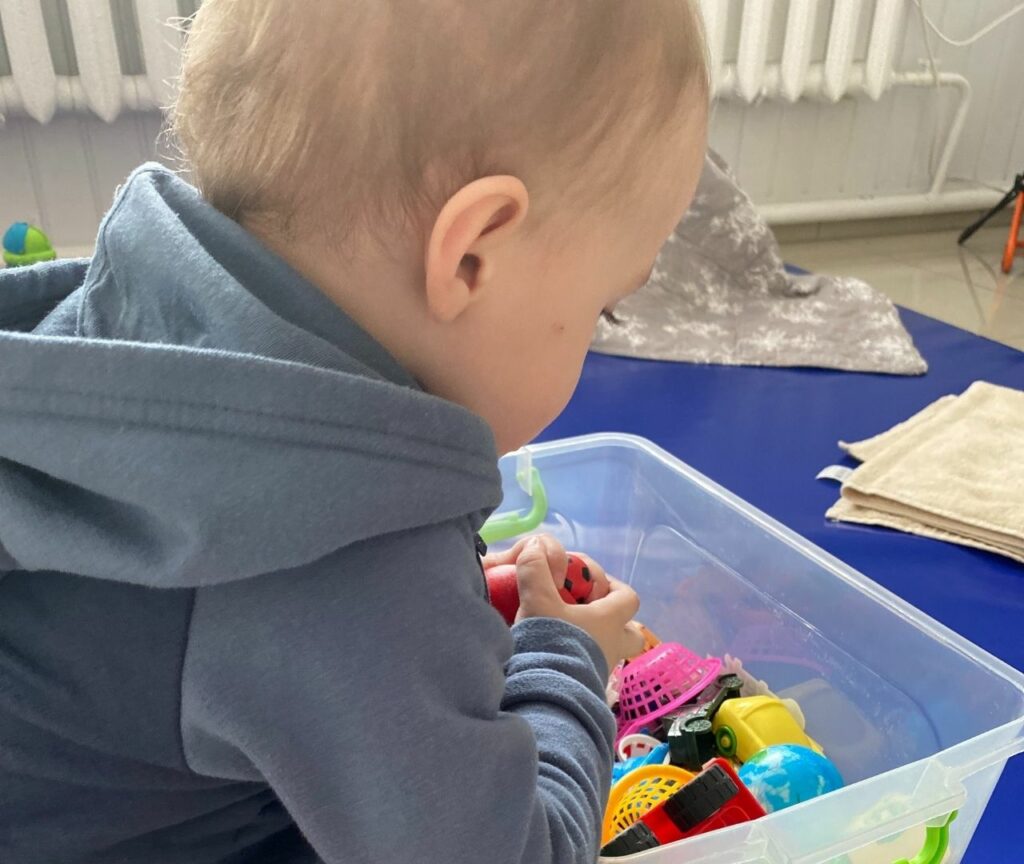
Liliana Rotaru is the chairperson of CCF Moldova, our partner organisation in Moldova.
Ukraine Crisis Appeal We Need your help
By supporting our work across Ukraine, Moldova and Romania you can help protect children and families right now and in the aftermath of this war.
The post Responding to the refugee crisis in Moldova appeared first on Hope and Homes for Children.
]]>